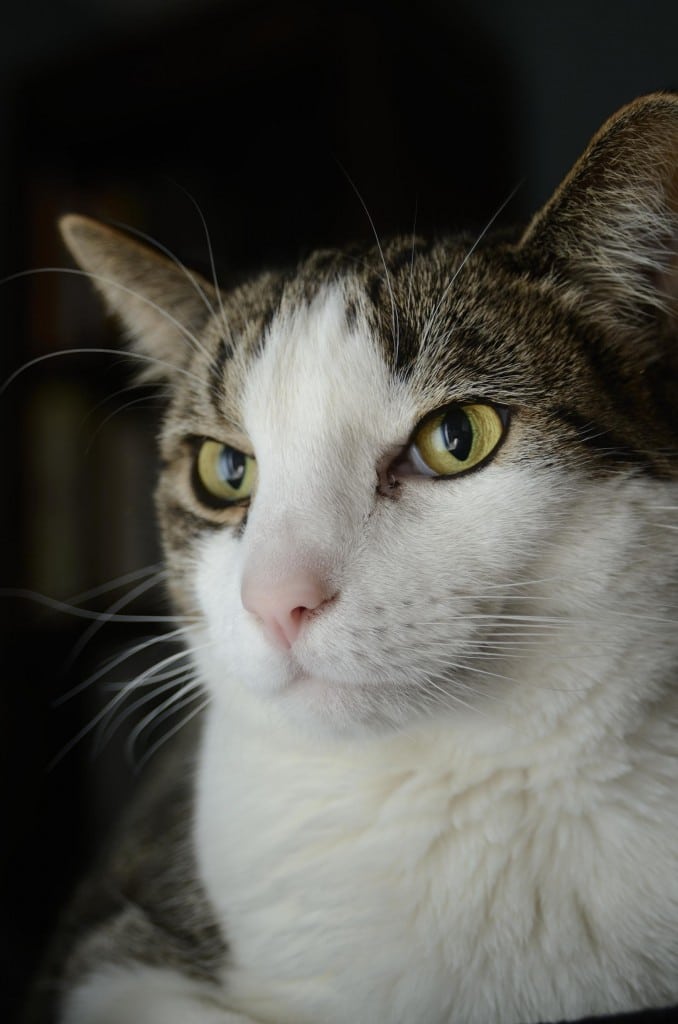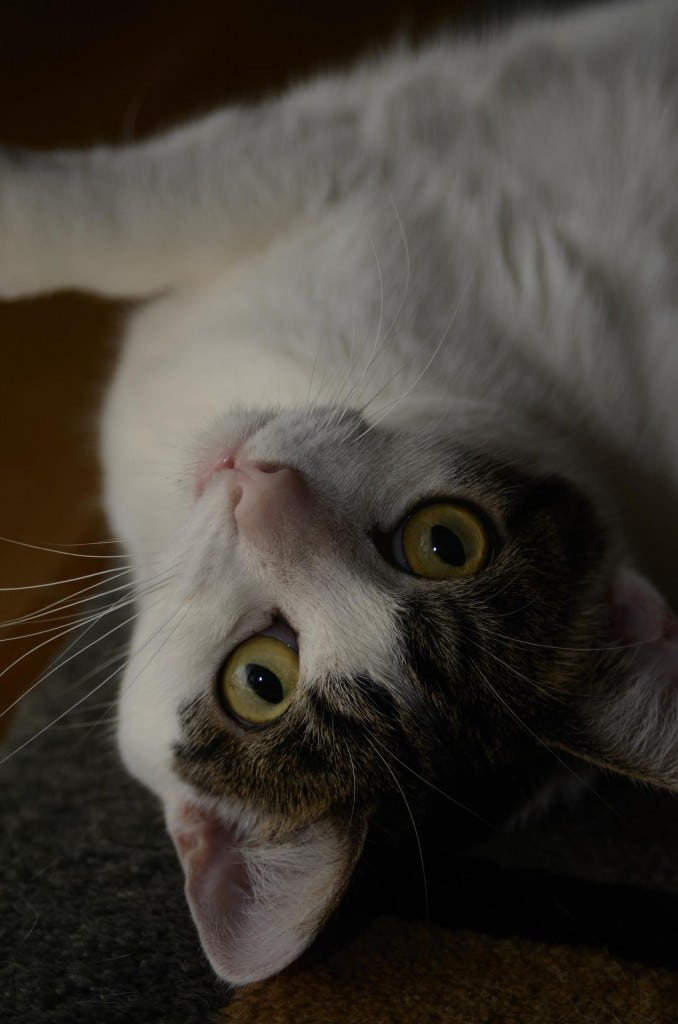The Tripawds Nation is so hoppy to have so many new feline friends joining us these days and as a result, we’re pleased to bring you more resources and information about cat care. We hope you enjoy the following guest blog post about cat nutrition, written by Allison Martin, mom to Tripawd Boomer and Quadpawd Amy.
Understanding a Cat’s Nutritional Needs
 While dogs have similar nutritional needs and digestive capabilities to humans, cats have some very specific needs that can significantly impact their overall health and quality of life.
While dogs have similar nutritional needs and digestive capabilities to humans, cats have some very specific needs that can significantly impact their overall health and quality of life.
Dogs and cats are both carnivores but they are different classes of carnivores. Dogs are known as opportunistic carnivores, meaning that while they do best on a meat centered diet, they can survive on a vegetarian or vegan diet.
Cats, however, are obligate carnivores, meaning they require meat for long-term survival. They can eat other plant based foods but require certain essential nutrients they can only get from meat.
While humans and dogs are able to convert certain plant based nutrients into ones normally found in meat sources, cats do not have the ability to do this efficiently. Taurine, arachidonic acid, vitamin A, and vitamin B12 are all essential nutrients that cats can not get in sufficient amounts through plant based foods. A prolonged taurine deficiency can lead to irreversible blindness and congestive heart failure.
 Cats have a very short digestive tract compared to that of a human. It is designed to digest meats quickly and efficiently which decreases the risk of illness from food borne pathogens. They also have a larger liver that is designed to convert fat directly into glucose which equates to energy.
Cats have a very short digestive tract compared to that of a human. It is designed to digest meats quickly and efficiently which decreases the risk of illness from food borne pathogens. They also have a larger liver that is designed to convert fat directly into glucose which equates to energy.
Humans often rely on carbohydrates for their energy however cats systems are very inefficient at converting carbs into energy, most of it is converted directly into body fat. The incidence of obesity and diabetes in domestic cats has increased with the popularity of feeding dry foods due in part to the fact that most traditional dry foods rely much to heavily on grain and plant based ingredients.
In addition to weight related issues, dry food’s popularity has also led to a dramatic increase in urinary tract problems in cats. As carnivores, cats have evolved to get the majority of their moisture from the food they eat – as one of the pet nutrition specialists I work with likes to tell people, “No matter how much water your cat drinks, it is not enough.”
They were not designed to eat dry, crunchy food and drink water, so many cats will spend much of their lives at least mildly dehydrated which can lead to poor kidney function, urinary tract infections, and the development of stones. Feeding a primarily wet food diet to cats is the best way to insure against these problems.
Doesn’t dry food keep their teeth clean, though? In short, no. If eating crunchy foods kept your pet’s teeth clean, dentists would be telling people to eat potato chips and pretzels instead of brushing their teeth. Cat’s mouths are designed to swallow foods in whole chunks torn from their prey.
As is characteristic of all carnivores, the jaws of a cat only move up and down, not side to side like a human. Their teeth are sharp and fine, designed to slice and tear soft tissue not crunch and grind dry hard kibbles.
Some studies are beginning to show that an exclusively dry diet may be detrimental to a cat’s dental health. Those hard kibbles grating against their teeth everyday may actually be flaking away their teeth over time.
The bottom line is that cats are meant to eat meat. Canned food is more convenient for some people but now there are some great frozen raw, freeze-dried and dehydrated options out there.
If you are changing your cat’s diet, experimentation is often the key – try a variety of flavors and textures to figure out what they like. If you prefer to continue feeding a dry food, the highest meat content options out there are EVO and Wysong.
As for wet foods there are many great options – Weruva, The Honest Kitchen, and Vital Essentials make just a few of the many outstanding products out there.
A little about me and my pack: I work at a family owned pet supplies store that prides itself on high-quality products and knowledgeable staff. I am owned by two dogs, both of whom adopted me at the sanctuary where I used to work. Amy is probably a McNab and Boomer is probably a boxer mix. In January 2013, Boomer developed a limp and after many months of wait-and-see, supplements, and tests he was finally diagnosed in July 2013 with disseminated Valley Fever, a rare fungal infection, in his right hock. He became a tripawd on September 13, 2013 and is now back to his old self.
This is absolutely great! Thanks to Allison for writing this, and to Tripawds for posting it for the Tripawd Nation. I have been telling people this over, and over – but unfortunately it seems like the vast majority of cat owners believe (by way of false advertising and widespread common misconception) that cats are perfectly healthy with just dry food, when that is simply not the case.
Great job for spreading wellness and information to pet pawrents who obviously mean well, but maybe just don’t know about the fine points of cat diet!
🙂